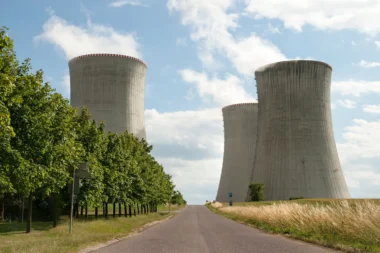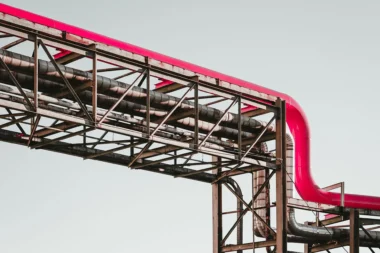Introduction
Superconducting power cables are advanced electrical transmission systems that utilize superconducting materials to achieve near-zero electrical resistance, enabling efficient and high-capacity energy transmission.
Superconducting power cables offer numerous advantages over conventional ones, including lower energy losses, higher transmission capacities, and reduced environmental impact. Their utilization has the potential to revolutionize energy transmission and contribute to a more sustainable and efficient electrical grid.
Working Principles for Superconducting Power Cables
Superconducting power cables operate based on the principles of superconductivity, a phenomenon in which certain materials exhibit zero electrical resistance when cooled below a critical temperature. This unique property allows superconducting power cables to transmit electricity with minimal losses, offering significant advantages over conventional lines. Here, we delve into the working principles of superconducting power cables, including superconductivity, cryogenic cooling, and critical current.
- The Phenomenon of Superconductivity: Superconductivity occurs when a material is cooled below its critical temperature, also known as the transition temperature. At this point, electrons in the material form Cooper pairs and move through the lattice structure without experiencing resistance. As a result, superconducting materials can conduct electricity with near-zero resistance, enabling highly efficient power transmission.
- Cryogenic Cooling: To maintain their superconducting state, superconducting power cables require cryogenic cooling systems. These systems use cryogens, such as liquid nitrogen or helium, to lower the cable’s temperature below the superconducting material’s critical temperature. Keeping the cable at cryogenic temperatures minimizes electrical resistance, allowing for efficient power transmission.
- Critical Current: Superconducting materials have a critical current density, beyond which they lose their superconducting properties and exhibit resistance. Temperature, magnetic field, and material properties all impact the necessary current. It is crucial to ensure that the current flowing through the superconducting power cable remains below the critical current to maintain the superconducting state.
To achieve efficient power transmission, superconducting power cables are designed with the following considerations:
- Superconducting Wire or Tape: Superconducting power cables use wires or tapes made from superconducting materials, such as niobium-titanium (Nb-Ti) or niobium-tin (Nb3Sn). These materials exhibit superconductivity at low temperatures and carry high current densities without significant power losses.
- Insulation and Cryogenic Support Structures: Superconducting wires are insulated using specialized materials that can withstand cryogenic temperatures. Additionally, cryogenic support structures are employed to provide mechanical support and maintain the correct positioning of the superconducting wires within the cable.
- Cryogenic Cooling Systems: To maintain their superconducting state, superconducting power cables require efficient cryogenic cooling systems. Liquid nitrogen, or helium, is circulated on the line to maintain the low temperatures necessary for superconductivity. These cooling systems are designed to minimize heat transfer and ensure stable operation of the cable.
- Fault Protection Systems: Superconducting power cables incorporate fault protection systems to safeguard against potential faults, such as excessive current or voltage surges. These systems monitor the cable’s condition and can quickly detect and isolate any faults to prevent damage to the cable and ensure safe operation.
By combining superconductivity with advanced insulation, cryogenic cooling, and fault protection systems, superconducting power cables can send electricity quickly and in large amounts. Continued research and development in this field hold immense potential for revolutionizing the energy sector and paving the way for a more sustainable and efficient electrical grid.
Architecture and Components of Superconducting Power Cables
- Superconducting Wires or Tapes: Superconducting power cables use wires or tapes made from superconducting materials, such as niobium-titanium (Nb-Ti) or niobium-tin (Nb3Sn). These materials exhibit superconductivity at low temperatures and can carry high current densities with minimal resistance. The superconducting wires or tapes are carefully engineered to withstand the mechanical stresses associated with cable installation and operation.
- Insulation Materials: Insulation is crucial in superconducting power cables as it prevents electrical and thermal losses. The insulation materials used in these cables are carefully selected to withstand the cryogenic temperatures necessary for superconductivity. They also provide electrical insulation between the superconducting wires and other cable components, ensuring reliable and safe operation.
- Cryogenic Support Structures: Superconducting power cables require support structures to maintain the correct positioning and alignment of the superconducting wires within the cable. These structures are designed to withstand cryogenic temperatures and provide mechanical support. They also help manage the thermal gradients that may occur during cable operation.
- Cryogenic Cooling Systems: Maintaining the low temperatures necessary for superconductivity is essential to operating superconducting power cables. Cryogenic cooling systems circulate a cryogenic fluid, such as liquid nitrogen or helium, around the cable. These cooling systems remove heat generated during cable operation and maintain the cable at the desired cryogenic temperatures.
- Electrical Insulation Systems: Superconducting power cables require robust electrical insulation systems to prevent electrical breakdown and ensure reliable insulation between the superconducting wires and the surrounding components. The insulation systems are designed to withstand the electrical stresses experienced during cable operation and maintain the integrity of the cable’s electrical insulation.
- Protective Layers and Shielding: Additional protective layers and shielding are often incorporated to enhance the mechanical and electrical properties of superconducting power cables. These layers provide mechanical strength, protection against external factors such as moisture and contaminants, and electromagnetic shielding to minimize electromagnetic interference.
- Connectors and Joints: Superconducting power cables often require connectors and joints to facilitate the connection between different cable sections or to connect the cable to other power transmission components. These connectors and joints are designed to maintain the superconducting state and minimize potential energy losses or electrical resistance at the connection points.
Techniques used
- Active Magnetic Shielding: Superconducting power cables employ active magnetic shielding techniques to mitigate the impact of external magnetic fields. Magnetic shielding systems consisting of superconducting materials are strategically placed around the superconducting wires to create a region of reduced magnetic field, minimizing magnetic field penetration and reducing the effects of external magnetic interference.
- Cryogenic Cooling Systems: Efficient cryogenic cooling systems are crucial for maintaining the superconducting state of power cables. Advancements in cryogenic technologies and cooling techniques, such as cryocoolers and cryogenic liquids, enable effective and reliable cooling of the wires. These systems ensure the cables are kept at low temperatures to sustain superconductivity and minimize power losses.
- Quench Detection and Protection: Quenching refers to the sudden transition of a superconducting material from its superconducting state to a resistive state, resulting in the loss of superconductivity. Quench detection and protection systems are employed in superconducting power cables to identify and rapidly mitigate quench events. These systems involve sensors, monitoring devices, and protective measures to prevent excessive heating and potential damage to the cable.
- Fault Current Limiters: Fault current limiters (FCLs) control and limit the magnitude of fault currents that may occur in power systems. Superconducting FCLs employ superconducting materials to significantly reduce the impedance during fault conditions, limiting the fault current and protecting the cable and other components from damage. FCLs contribute to the stability and reliability of superconducting power cable systems.
- Monitoring and Control Systems: Superconducting power cables incorporate advanced monitoring and control systems to ensure optimal operation and performance. These systems involve sensors and measurement devices continuously monitoring various parameters, such as temperature, current, voltage, and magnetic fields. Algorithms and control strategies are employed to analyze the collected data, detect anomalies or faults, and enable efficient power flow and grid integration.
- Power Electronics and Grid Integration: Superconducting power cables are integrated with power electronics systems that enable efficient power transmission, voltage regulation, and grid integration. Power electronic converters, such as DC-DC converters, interface between the superconducting cable and the power grid, ensuring seamless integration and control of power flow.
- Energy Management and Optimization: Algorithms and optimization techniques are utilized to manage and optimize the operation of superconducting power cable systems. These algorithms consider factors such as power demand, grid conditions, and cable characteristics to maximize the utilization of the cable’s capacity, minimize losses, and optimize energy flow within the power system.
Conclusion
In conclusion, superconducting power cables have the potential to revolutionize energy transmission by offering near-zero resistance and high-capacity transmission capabilities. The combination of advanced superconducting materials, insulation techniques, cryogenic cooling systems, and fault protection technologies makes these cables a promising solution for the future electrical grid. Further research and development in superconducting power cables will drive widespread adoption and contribute to a more efficient and sustainable energy infrastructure.



